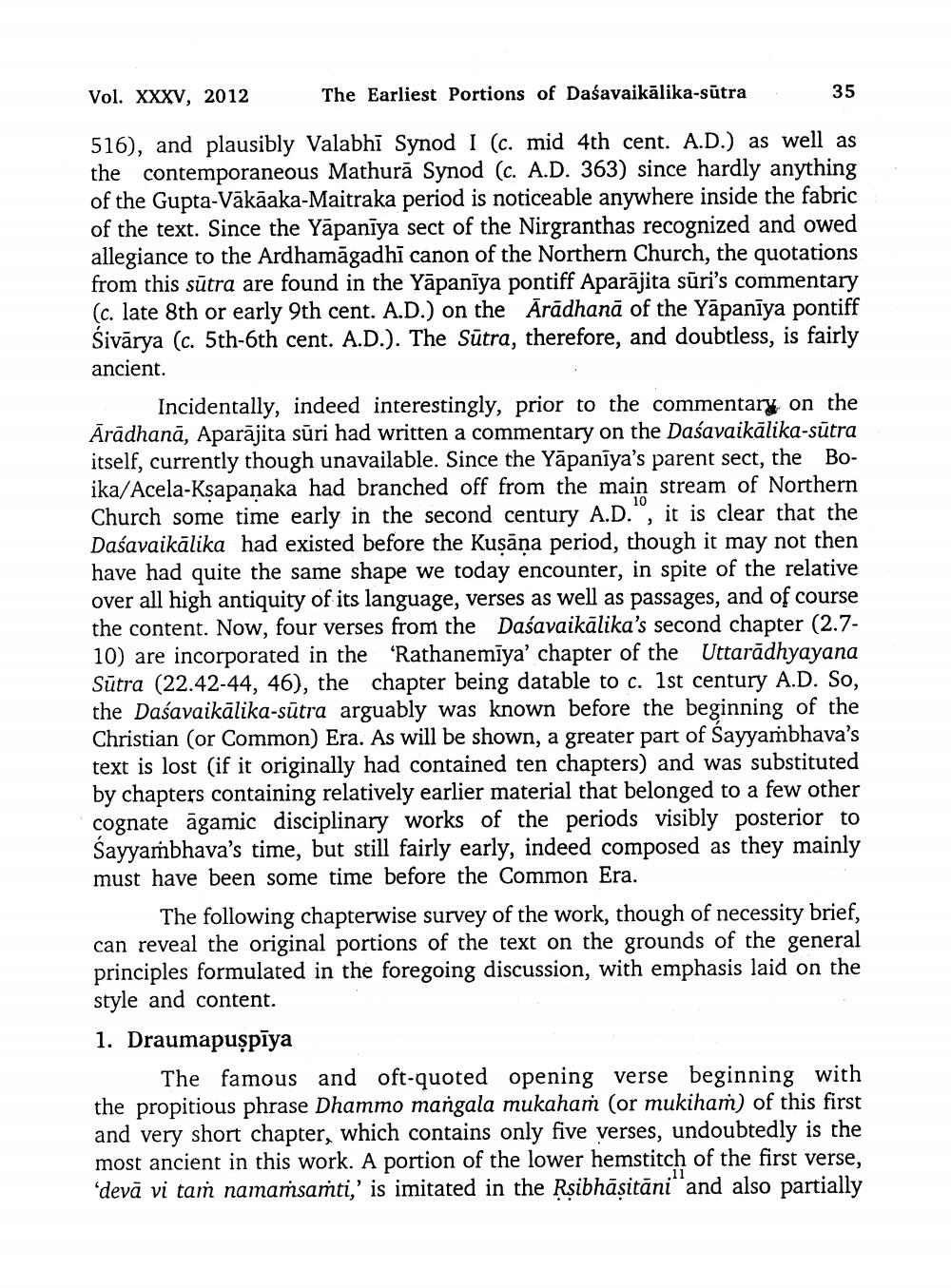________________
Vol. XXXV, 2012
The Earliest Portions of Daśavaikālika-sūtra
35
516), and plausibly Valabhi Synod I (c. mid 4th cent. A.D.) as well as the contemporaneous Mathurā Synod (c. A.D. 363) since hardly anything of the Gupta-Vākāaka-Maitraka period is noticeable anywhere inside the fabric of the text. Since the Yāpanīya sect of the Nirgranthas recognized and owed allegiance to the Ardhamāgadhi canon of the Northern Church, the quotations from this sūtra are found in the Yāpanīya pontiff Aparājita sūri's commentary (c. late 8th or early 9th cent. A.D.) on the Ārādhanā of the Yāpanīya pontiff Śivārya (c. 5th-6th cent. A.D.). The Sūtra, therefore, and doubtless, is fairly ancient.
Incidentally, indeed interestingly, prior to the commentary on the Aradhanā, Aparājita sūri had written a commentary on the Daśavaikālika-sūtra itself, currently though unavailable. Since the Yāpaniya's parent sect, the Boika/Acela-Ksapanaka had branched off from the main stream of Northern Church some time early in the second century A.D.", it is clear that the Daśavaikālika had existed before the Kusāna period, though it may not then have had quite the same shape we today encounter, in spite of the relative
all high antiquity of its language, verses as well as passages, and of course the content. Now, four verses from the Daśavaikālika's second chapter (2.710) are incorporated in the “Rathanemiya chapter of the Uttarādhyayana Sūtra (22.42-44, 46), the chapter being datable to c. 1st century A.D. So, the Daśavaikālika-sūtra arguably was known before the beginning of the Christian (or Common) Era. As will be shown, a greater part of Sayyambhava's text is lost (if it originally had contained ten chapters) and was substituted by chapters containing relatively earlier material that belonged to a few other cognate āgamic disciplinary works of the periods visibly posterior to Sayyambhava's time, but still fairly early, indeed composed as they mainly must have been some time before the Common Era.
The following chapterwise survey of the work, though of necessity brief, can reveal the original portions of the text on the grounds of the general principles formulated in the foregoing discussion, with emphasis laid on the style and content. 1. Draumapușpīya
The famous and oft-quoted opening verse beginning with the propitious phrase Dhammo mangala mukaham (or mukiham) of this first and very short chapter, which contains only five verses, undoubtedly is the most ancient in this work. A portion of the lower hemstitch of the first verse, devā vi tań namaṁsaṁti,' is imitated in the Rsibhāṣitāni" and also partially




